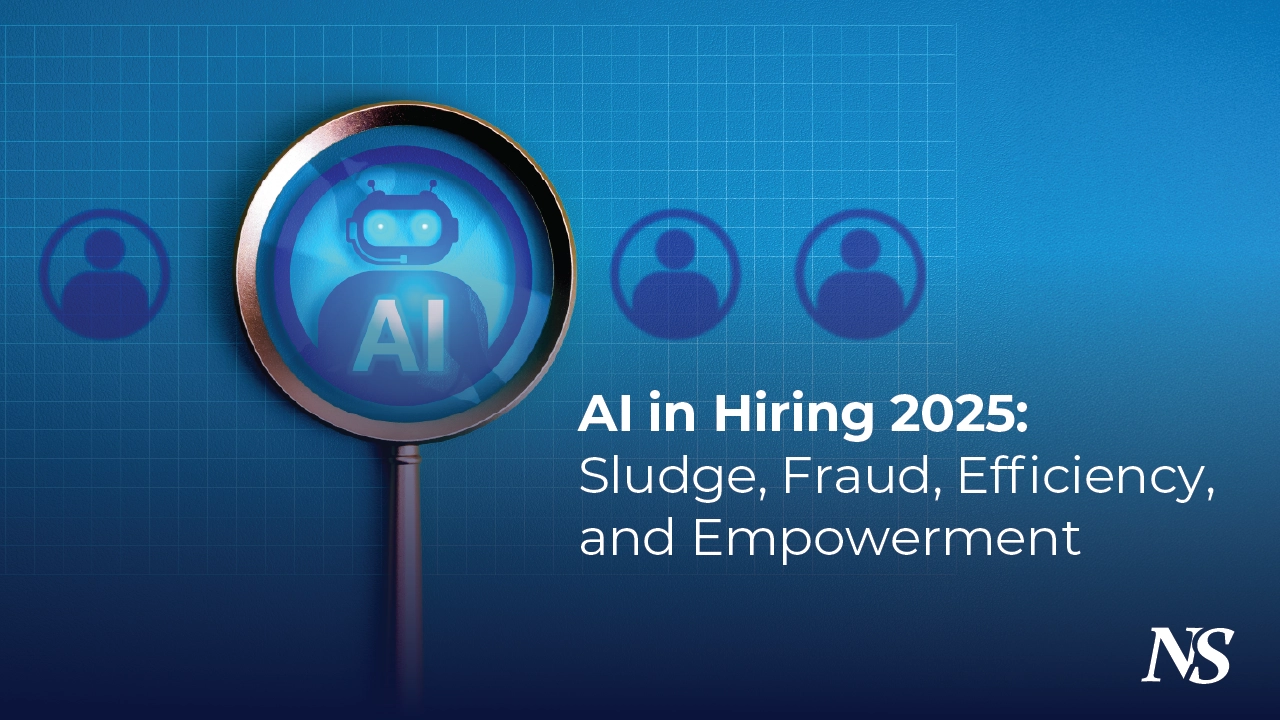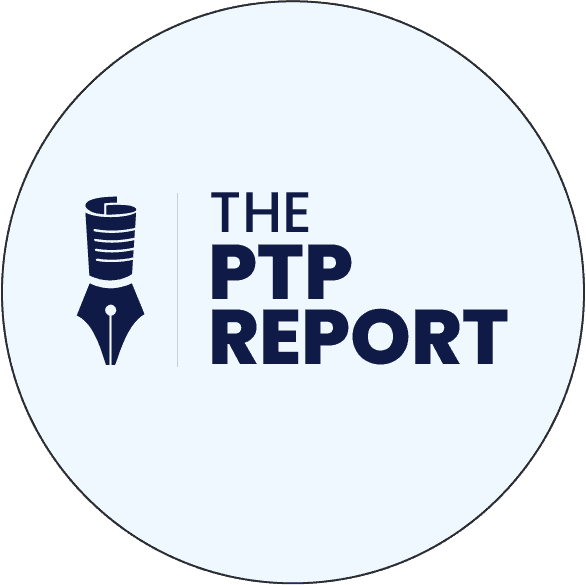11,000 applications per minute.
According to The New York Times’s Sarah Kessler, that’s what LinkedIn is dealing with today, up 45% from just a year ago.
This is because it’s now so easy to get resumes updated, keywords added, and cover letters revised. All with the help of AI chatbots.
Even easier are AI agents, who can find job openings and apply for you. Services like Apply Hero boast more than 1.6 million applications sent, with interviews landed at a very impressive list of companies.
You just “upload a resume, set your job preferences, and let our AI automatically customize and apply to thousands of high-quality jobs on your behalf.”
And while this may seem wonderful to some frustrated job seekers (see below), the speed of onset and scale of use of such tools is risking derailing the entire hiring process for many companies.
Of course, HR departments and recruiters are also using AI. For job application filtering, pre-screening, writing and posting job listings, and much more, it acts as an initial gateway and ongoing assistant.
In today’s newsletter, I take the pulse of this corner of the AI arms race, considering: the wave of so-called “AI sludge” coming via mass applications; recruitment AI ethics and the ongoing risks of bias; fraud and deepfake infiltration of the process; and what impacts the automated hiring process is having right now.
AI Sludge in Recruitment Is the Latest Stage of the AI Arms Race
We’ve been talking about AI tools for recruiters for a long time. In fact, we ran a PTP Report piece on this just in April, and it’s also been a regular feature in our AI roundups.
AI use on the candidate side has perhaps been less covered, though it may be just as widely used. According to a Jobseeker poll conducted this year, over 90% said AI made their applications better.
(Ironically, from the same source, 41% of HR specialists said they were less likely to consider candidates who used AI.)
And while there is no doubt AI can provide invaluable and highly affordable support for candidates and recruiters alike (we’ll get to that in a moment), it is, at present, also being misused.
The same New York Times article gives an example of an HR consultant in Utah, who posted a job and within 24 hours had 600 applications. Within days, the total doubled, and she was forced to take the listing down.
And now three months later, she is still sorting through applicants.
At PTP, we have seen this surge firsthand, with an unprecedented rise in AI submission vs AI filtering which can leave some completely overwhelmed or even closed out of the process.
AI in Hiring 2025: The Value for Both Sides
As the CEO of an AI-first company, I am quite clearly a believer in the technology, both as an early-adopter and ongoing advocate of its value in prudent use.
So, before I bemoan too much about the dangers of this current automation escalation, I want to cover some of the benefits.
New Benefits in AI Recruiting Tools in 2025
Let me start by saying that, without AI assistance, many recruiters like the one discussed above would simply be unable to keep up.
We’ve discussed at length what AI can provide in reviewing applications, but today I want to touch on additional innovations we’re using at PTP.
Screening and Scoring
The New York Times also ran a recent piece on AI use among interviewers (see below), and while much of it profiled candidates who were frustrated by experiences they deemed dehumanizing, it also gave the example of Propel Impact, a nonprofit that teaches young people about investing.
Stretched for resources, Propel was able to use AI to increase their screenings for fellowship positions to 500 from just 150 the year before, prompting their executive director Cherlyn Chok to tell Natallie Rocha:
“There’s no way we would have been able to successfully recruit and set up offers to 300 people to join our program.”
This AI use also improved the applicant experience, reducing the number of interviews needed by recording sessions and providing transcripts and scoring.
And of course, critically, there were still people in the loop, to enable candidates to ask questions and ensure ethical hiring processes were followed.
In our experiences at PTP, we have seen similar benefits with AI-powered recruiting tools used judiciously.
They’ve enabled as much as 80% reductions in time-to-hire, at some 60% lower costs.
Of course, critical here has been maintaining human touchpoints and review, and only deploying systems that are sufficiently robust and transparent, enabling transfer to humans as requested or when issues arise.
Chipotle’s AI interview bot, Ava Cado, has shown similar benefits for their company, reducing hiring time by a reported 75% overall.
Scheduling, Contact, and Analytics
Less contentious is scheduling automation, which has proven to be a large benefit to all sides.
AI systems are more easily accessible and remove hold times and repeated back-and-forths, and automate something few people like doing and even fewer have the time for.
AI contact automation also gives companies the power to always respond, which can remove the “black box” experience many candidates have suffered in recent years, where their resumes vanish without a word, or they feel “ghosted” even after going through multiple steps of a hiring process.
Overburdened recruiters can face enormous delay in getting through such contacts (or drop them from necessity), but AI systems can—and should—eliminate this problem.
And of course, AI also excels at record keeping, data-wrangling, and identifying patterns, which can help not only in recruitment but also retention.
By analyzing successful listings, for example, we’ve seen AI solutions assist in generating better job descriptions for future rounds.
AI Candidate Assistance Tools
I realize I opened this article by complaining about automation in the application side of things, but the truth is, AI is an incredible tool for job seekers.
The key, just as with the recruitment side, is using it judiciously and with care.
Revised Writing, Keywords, and Improved Grammar
The writers I know today agree with me that AI is not a great final draft writer.
Not yet anyway.
But what it can really do is help candidates improve their grammar, serve as proofreader, and give them another evaluation of their work—helping spot typos or awkward phrasing.
To this end, AI helps with keyword matching, though it can overstuff or make critical mistakes in this area.
Rough Drafts and Avoiding the Blank Page
Many people are not natural writers, and resumes, ongoing correspondence, and cover letters can inspire fear or procrastination for many. AI can be a revelation here, by getting you going with suggestions and helping revise or rephrase.
The trick is to ensure you’re always still the author, which means not only being responsible that the content is accurate and of high quality, but also that it sounds like you, because it’s in your words and you stand fully behind it. This means not letting AI write the final draft of anything that is supposed to come from you.
AI writing can both wash away your uniqueness and raise alarms for recruiters.
As mentioned above, nearly half of them still frown on application materials they believe to have been modified by AI.
Greater Efficiency
Ultimately, time-saving is the goal for everyone, and AI provides it. But it should be your assistant, not a replacement for your own work.
Ignoring this fact can ruin one’s chances of success and also contribute to the very sludge that’s escalating the automation of this entire process.
An Updated Look at AI Hiring Bias
Because AI is a machine, and data-driven, people tend to assume it’s unbiased. And no matter how many times we write this, the issue persists. AI systems have inherent biases.
It is a tricky one, too, because AI can also help reduce bias (this akin to the cheating issue, where AI both helps and hurts—see below).
I believe the solution is understanding that AI is not neutral. It is built off training data that is human and contains all our biases and should be used accordingly.
There have been numerous cases of this in recent years, of automated systems penalizing underrepresented groups, ironically because they are underrepresented.
And of course, today these same issues remain.
One example is Mobley v. Workday, a class-action lawsuit that’s ongoing now. This suit alleges that algorithms denied candidates based on their age, time and time again.
Due to the scale of the system, and the number of applicants who used it over the age in question, damages assessed by the case could result in significant losses for the defendant.
And with AI legislation at the US state level proceeding (as I covered last time out), expect more and more regulation on transparency around AI decision-making for precisely this reason.
The message to recruiters and business leaders here should be obvious: you must have humans involved in your process.
Dealing with AI Interview Fraud and Deepfake Job Applicants
Before I conclude here, I want to revisit another AI-hiring issue we’ve encountered first-hand, and that’s AI fraud in the application process.
Just as this technology empowers recruiters and job seekers, it also enables criminals and bad actors.
In March, we ran a PTP Report on deepfake AI teammates, and since then, even more data has come to light.
In June, the US Department of Justice announced a renewed crackdown on this operation that’s seen agents from North Korea land and successfully work jobs at US companies under false identities.
The operation is much larger than initially believed, and it’s now known that more than 80 American identities have been used at more than 100 US companies. (The actual numbers will be far larger as this is ongoing.)
This is only possible by exploiting gaps in the hiring system, and deepfake technology has continued to make such scams, as well as cheating on technical interviews, for example, far easier.
[Check out this PTP Report for our write-up on Roy Lee and his company that helps applicants “cheat on everything.”]
And while at this time there is no magic interview cheating detection AI, experienced recruiters increasingly know the tells and can implement steps that make this, with current technology, almost impossible.
At PTP, we’ve integrated numerous checks into our recruiting process to address these issues and to ensure we are dealing with real people and not deepfakes.
Conclusion: AI Candidate Screening Is Still an Art
I’ve profiled a number of hiring automation pros and cons here, but the bottom line is that AI is increasingly essential in the field.
From candidates feeling they can’t crack through algorithmic checks to recruiters facing absurd levels of submissions, the AI transformation of the job seeking process is well underway.
And it’s understandable that in these early days we’re still seeing ham-fisted implementations as people look to one-up the system.
But as we continue to refine and improve this process, it’s essential that we retain the core of humanity in this process.
For recruiters, this means human checks on AI, human oversight on bias and decision-making, fraud evaluation and controls, and ultimately harnessing the incredible knowledge and value that experienced recruiters possess. All while doubling their efficiency in the rote tasks and even handing over the repetitive work.
For candidates, this means remembering they’re not the only ones with access to AI, and that the faster, easier, and less human their submission is, the less likely they are to stand out from others following the same steps.
Ultimately, I’m a believer in what AI is doing to improve recruiting and work as a whole. But it is going to take ongoing care and effective implementation to ensure it’s a future that’s better than what we have today.
References
Employers Are Buried in A.I.-Generated Résumés, The New York Times DealBook
The AI Job Search Revolution: Over 90% of US Jobseekers Find AI Useful in Their Job Search in 2025, Jobseeker
Welcome to Your Job Interview. Your Interviewer Is A.I., The New York Times
Lawsuit claims discrimination by Workday’s hiring tech prevented people over 40 from getting hired, CNN
Identities of More Than 80 Americans Stolen for North Korean IT Worker Scams, Wired
Undercover North Korean Remote Workers Hate This One Weird Question, Gizmodo
FBI warns of ongoing scam that uses deepfake audio to impersonate government officials, Ars Technica





